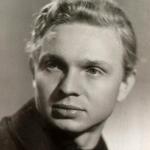
The performance of the ballet The Sleeping Beauty on 26 October will be dedicated to Yuri Solovyov, a dazzling Prince Désiré and Blue Bird in the 1950s-1970s.
He was known as “cosmic Yuri”. Inspired by the height and ease of Solovyov’s leaps, in the very early 1960s American journalists joked during a tour by the Kirov Theatre that soon the name of Yuri would be a synonym for the word “cosmonaut”.
Even during the dancer’s lifetime, Yuri Solovyov’s flying leaps were the stuff of legend. His ballonés (the ability to seem to float in the air) and the crystal purity of his performance enchanted audiences, provoked the eloquence of the critics and disarmed the stern professional judges of the art: juries were unable to find his equal at festivals in Vienna and Paris, and in 1963 the Académie de Danse in Paris called him “the finest dancer in the world”, awarding him the Vaslav Nijinsky Prize.
From his very first steps at the Kirov Theatre, to which Solovyov was admitted after graduating from the Vaganova School of Dance in Leningrad in 1958, he found himself in the limelight. Following his debut in the additional pas-de-deux in Giselle critics wrote that it was worthwhile going to a performance if only for the purpose of seeing Solovyov. But he did not become a star overnight – he came to the principal dancer repertoire gradually. He danced the roles of classical princes – the romantic Albrecht, Siegfried and the Prince in The Nutcracker. His aristocratic Désiré was recorded on film – Solovyov performed this lead role in a film version of the ballet The Sleeping Beauty. Video clips have preserved many highlights of his stage performances, recorded his leap, his impeccable features and his beautiful training, but the camera lens was not able to convey the light that this dancer gave out on the stage, a light so loved by audiences and admired by his colleagues.
Solovyov’s repertoire included many characters for whom flight was an integral part of the role. He soared through the air as the Blue Bird in The Sleeping Beauty, and he created a sensation of weightlessness as the Bright Falcon in Yakobson’s Land of Miracles. His Icarus in the eponymous ballet by Belsky strove to fly, and his character in Sergeyev’s Distant Planet enchanted the expanse of the universe. And in Kasatkina and Vasiliev’s ballet The Creation of the World Solovyov appeared as a completely different celestial body – an amusing and kindly God. His on-stage colleagues recalled how his Fisherman in Shore of Hope broke free of servitude and acquired the gift of flight: “Solovyov’s powerful bird strove heavenwards. It seemed as if he was flying, not even touching the ground: the moments when he soared in the air lasted fantastically long.” And even Solovyov’s Youth in Leningrad Symphony was written about, with one critic stating that his “leaps reminded one of a plane soaring skywards in order to dive down on the hordes of his enemies.” Flight in dance was second nature to him. But this flight was interrupted too soon – at the fateful age of thirty-seven.
Olga Makarova